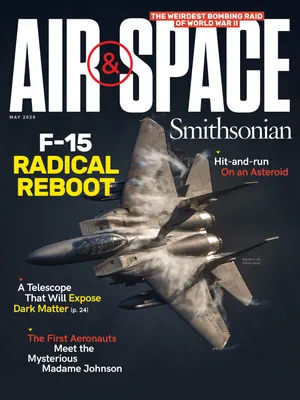War Stories, New and Old, at the National Air and Space Museum
Revitalization also means commemorating World War II in unfamiliar ways.
/https://tf-cmsv2-smithsonianmag-media.s3.amazonaws.com/filer/e1/df/e1df6193-8d99-4204-8bcc-f5432ad7f263/25b_am2020_si-97-17490_live.jpg)
As we commemorate the 75th anniversary of the end of World War II, I’ve been thinking about the classic World War II stories of triumph that we all know. We have learned the stories of the pilots and paratroopers who were the first to cross the English Channel on D-Day, of the perilous mission to Tokyo flown by Jimmy Doolittle and his Raiders, and of the other aviators and aircraft that helped secure Allied victory. Stories like these—of unique dilemmas, unconventional solutions, and ultimate success—are seen over and over again in the chronicles of aviation and spaceflight. And there is a good reason to tell them: They are a vital part of the history that shaped the world we live in today.
But if we stop there and tell only these stories, we limit our ability to effect real change in the lives of those who walk through our doors. I want the National Air and Space Museum to help you feel the power of the history you already know and uncover new stories about people breaking barriers to fight for their rightful place. We’ve taken the steps to find these moving accounts, and our ongoing renovation—for which we are reimagining all of our exhibitions at the Museum in Washington, D.C.—provides the opportunity to include them in our physical space.
Our upcoming redesigned “World War II” gallery is a great example of this.
The gallery will use a Women Airforce Service Pilots (WASP) uniform to acknowledge the impact of these groundbreaking pilots who were willing to make the same sacrifices as their male counterparts. The “Five Faces of the P-51 Mustang” section will interpret this iconic World War II aircraft through the multitude of nationalities, races, genders, and theaters represented among its pilots. And for the first time, we will highlight in an exhibition the Soviet airwomen who flew in combat during World War II. (The Soviet Union was the only nation during the war to open combat aviation to women.) I am excited to help bring forward the stories of these courageous women, including the only two recorded female aces in the world, Lydia Litvyak and Yekaterina Budanova.
The transformation of our location on the National Mall is challenging us to look carefully at the history we tell and the stories we share, and to create a new National Air and Space Museum where all visitors who walk through our doors feel like they belong.
